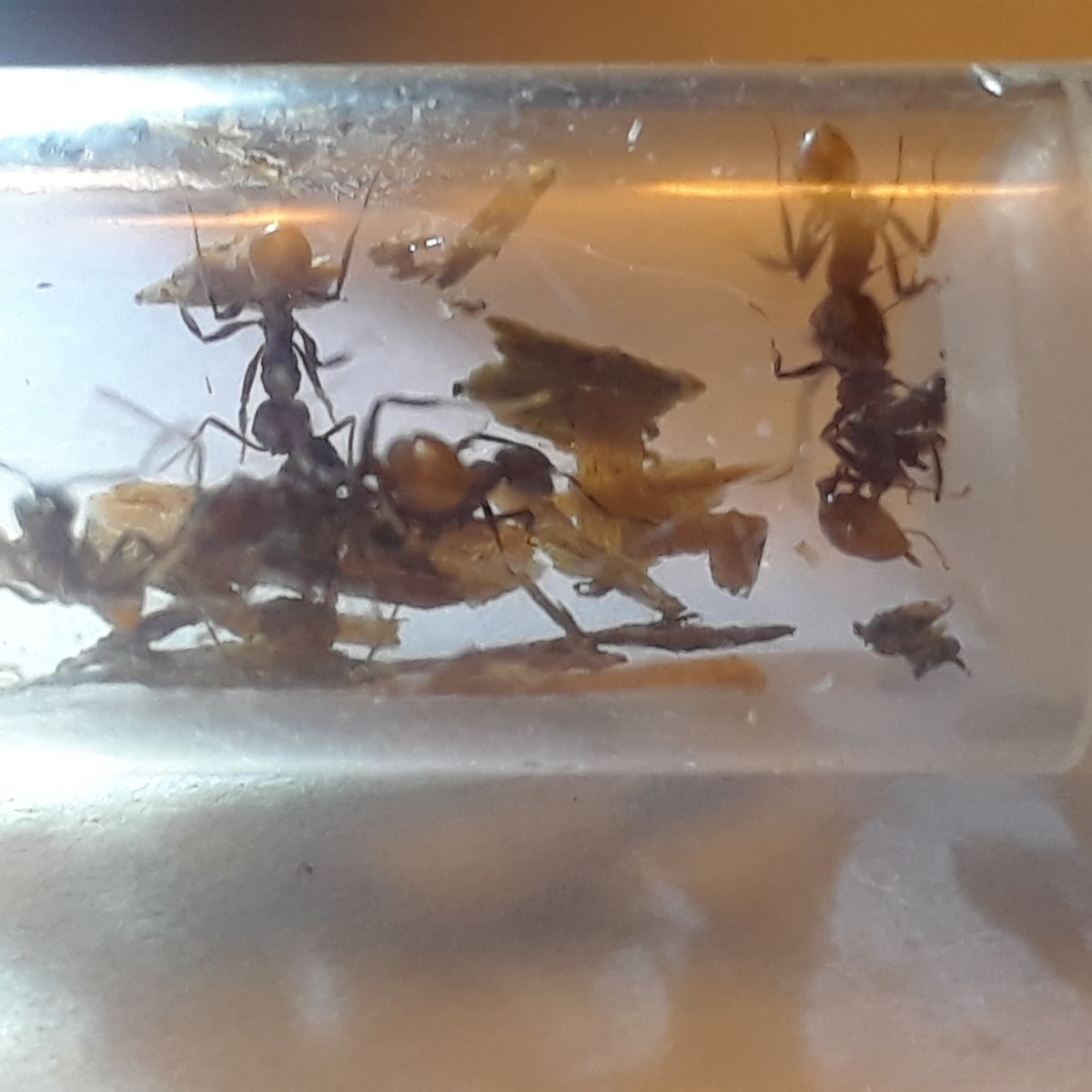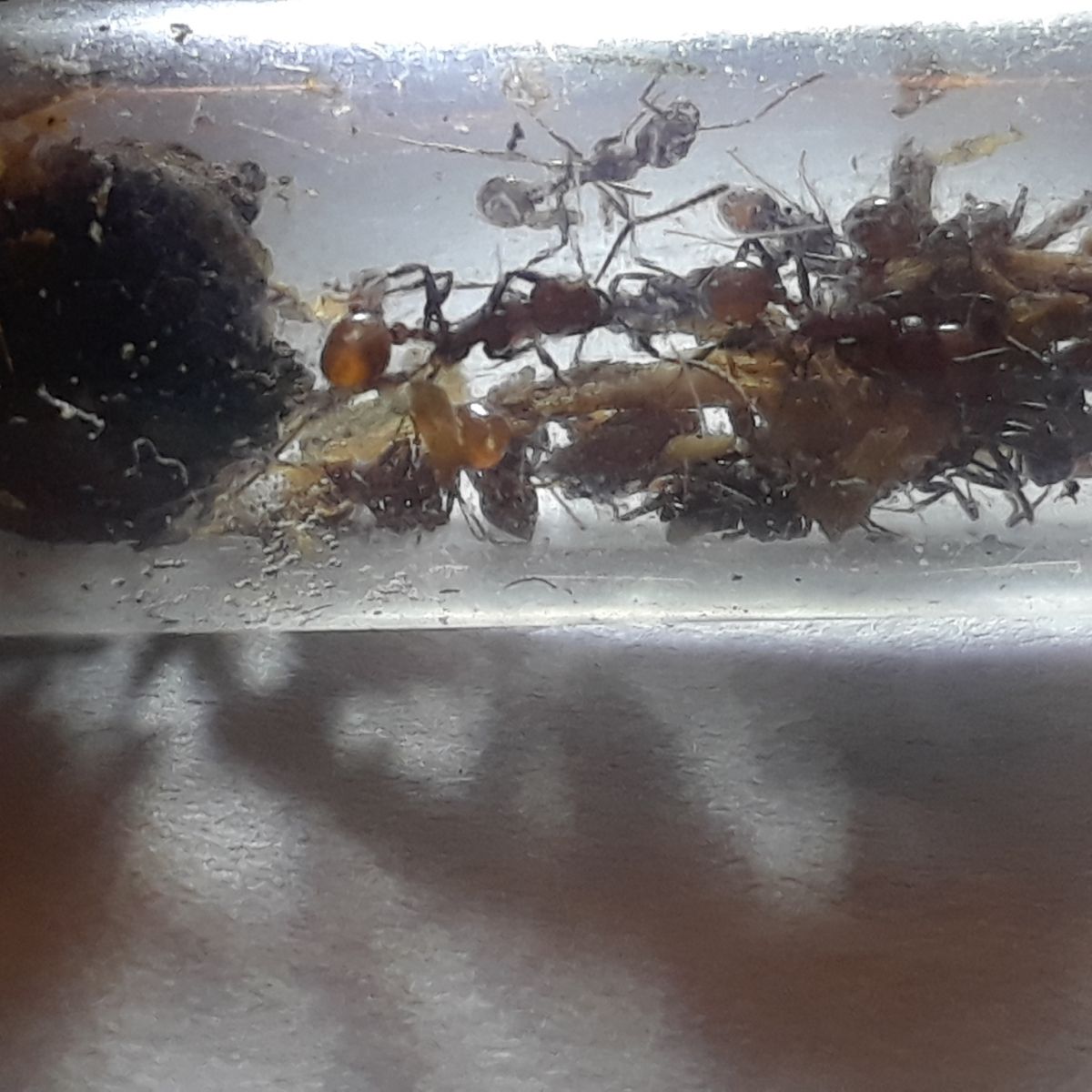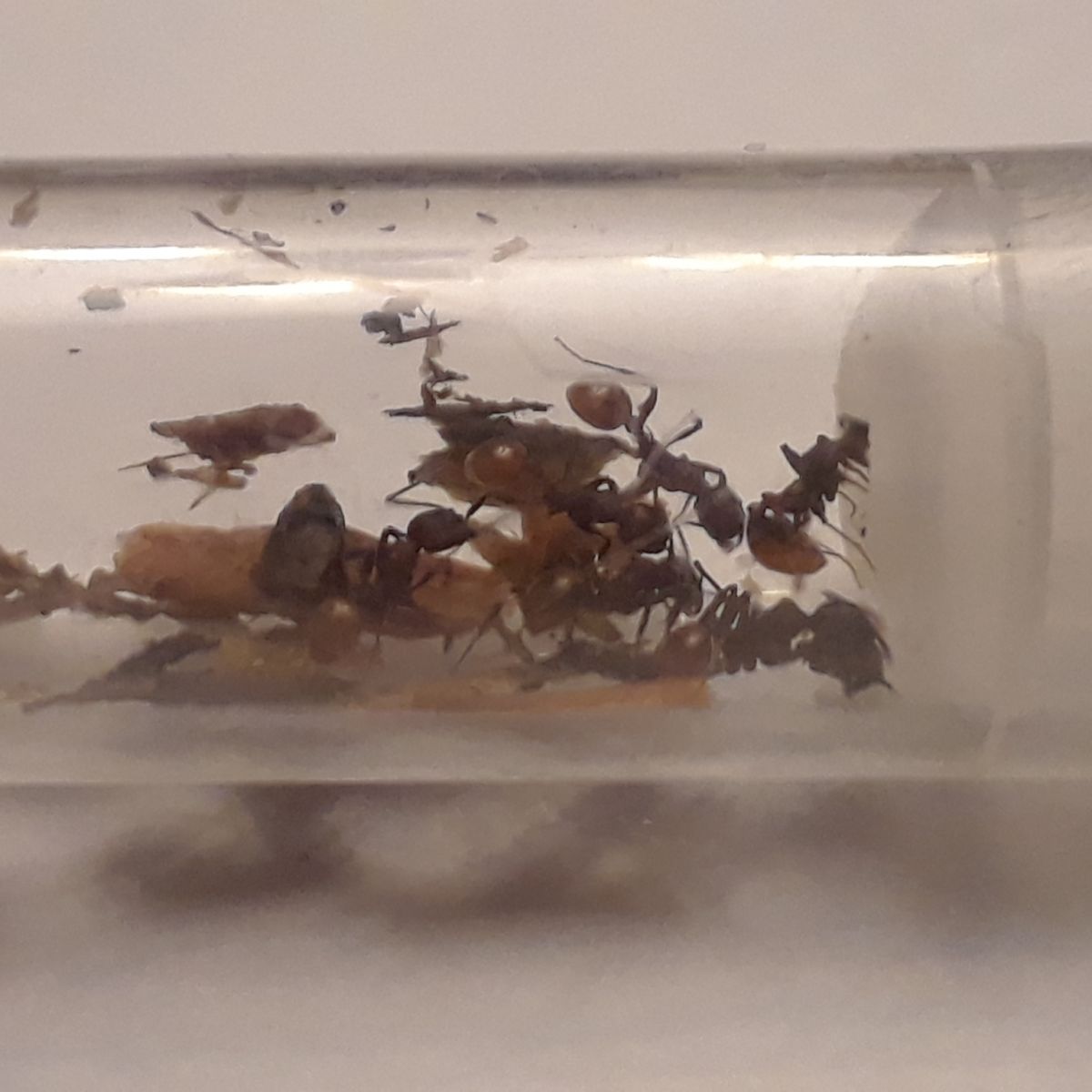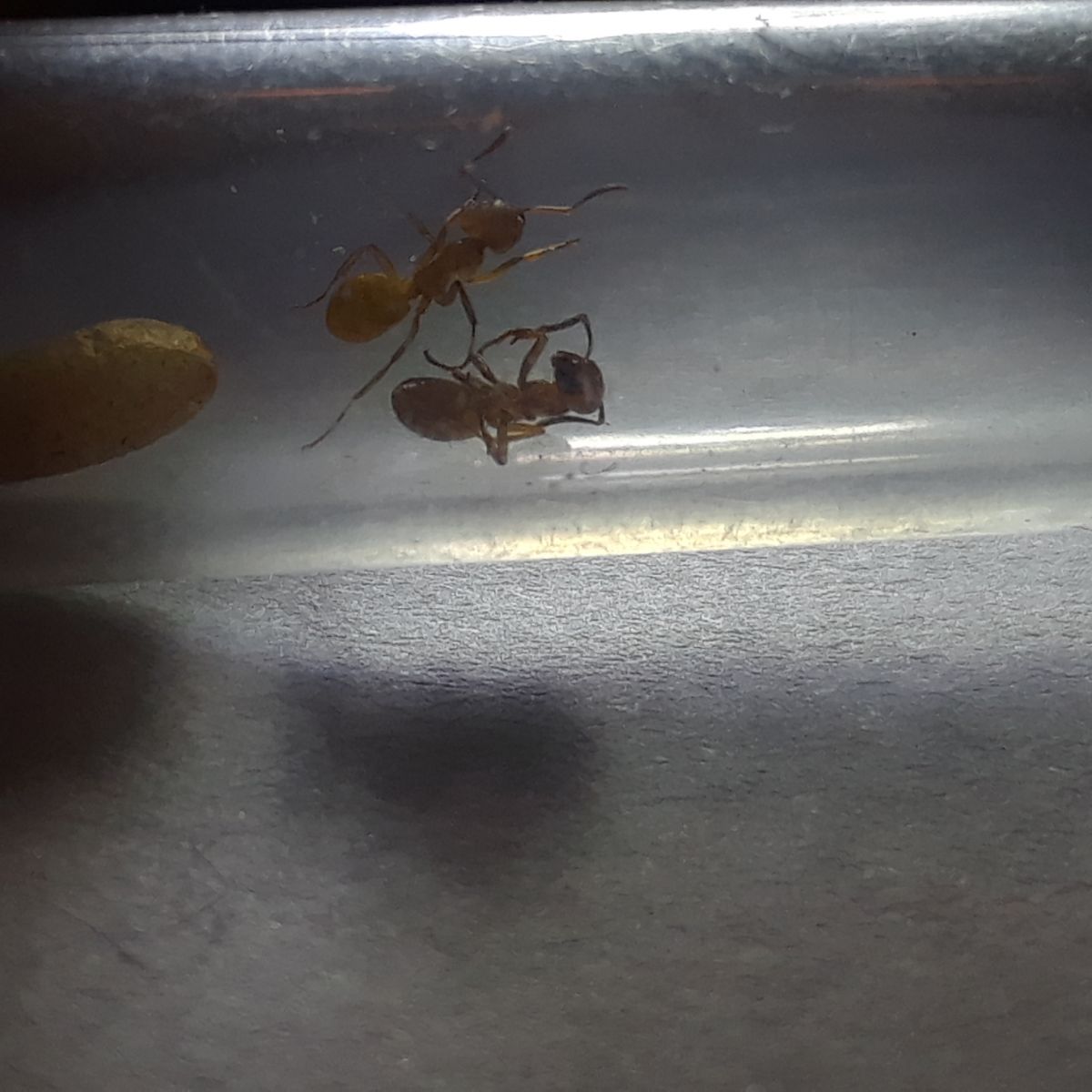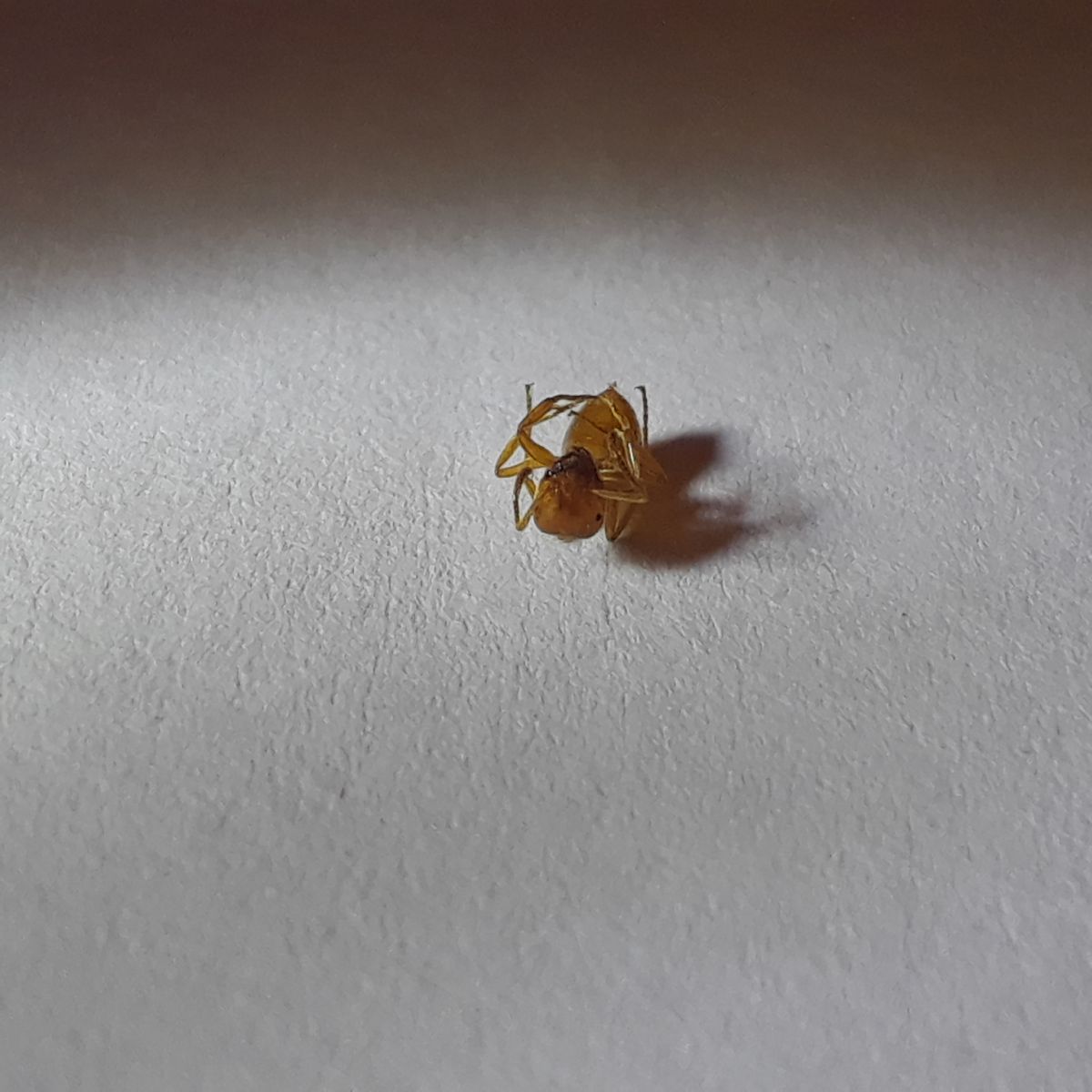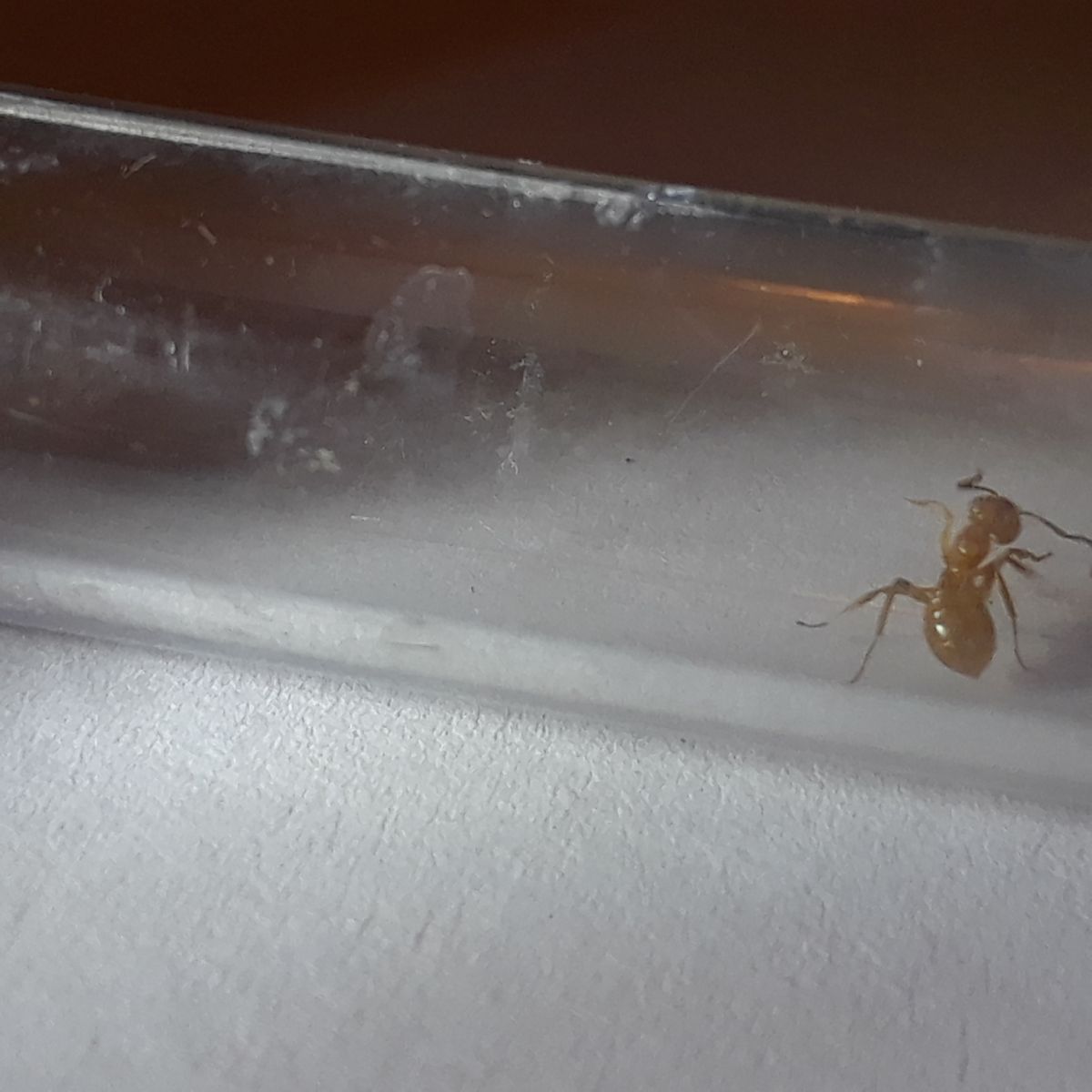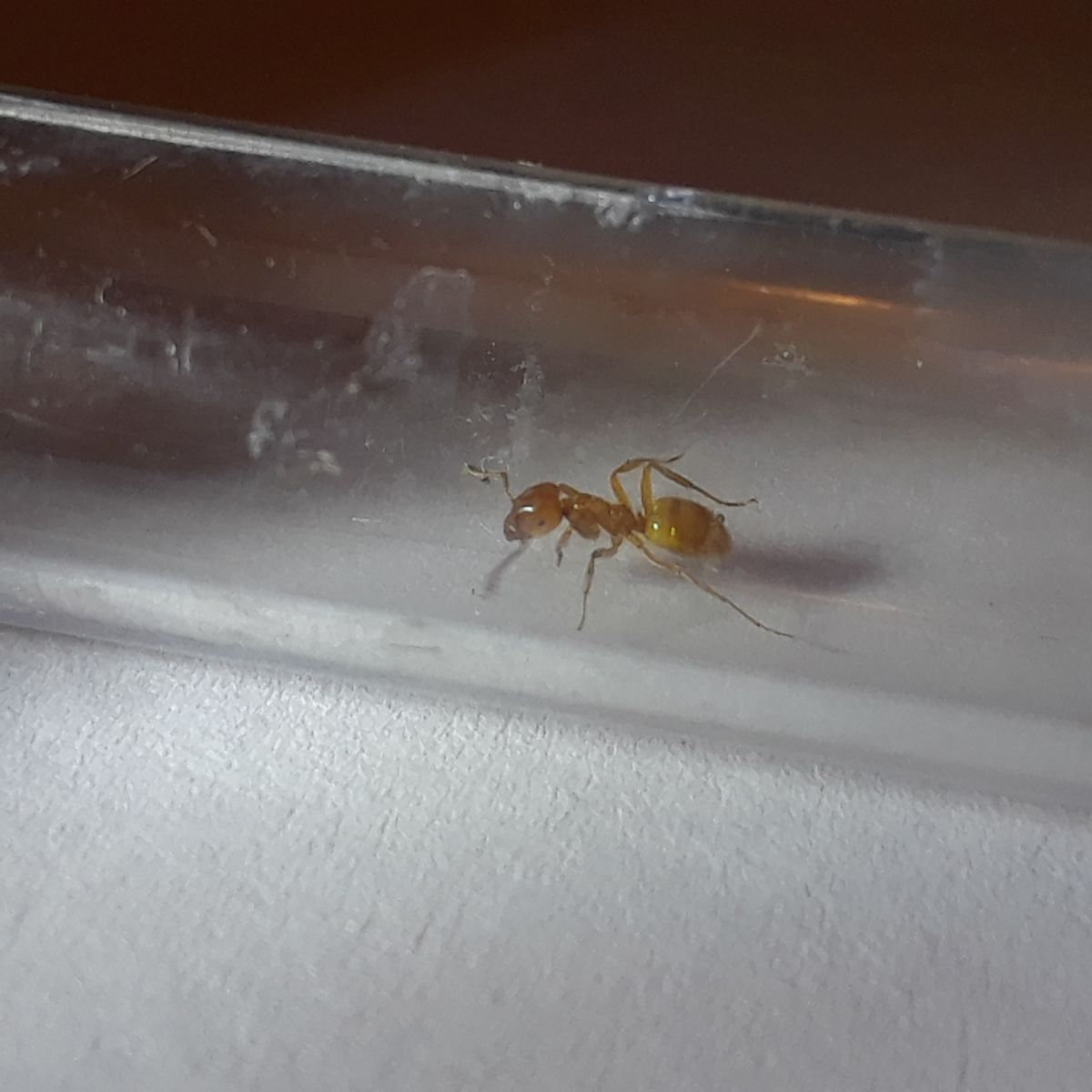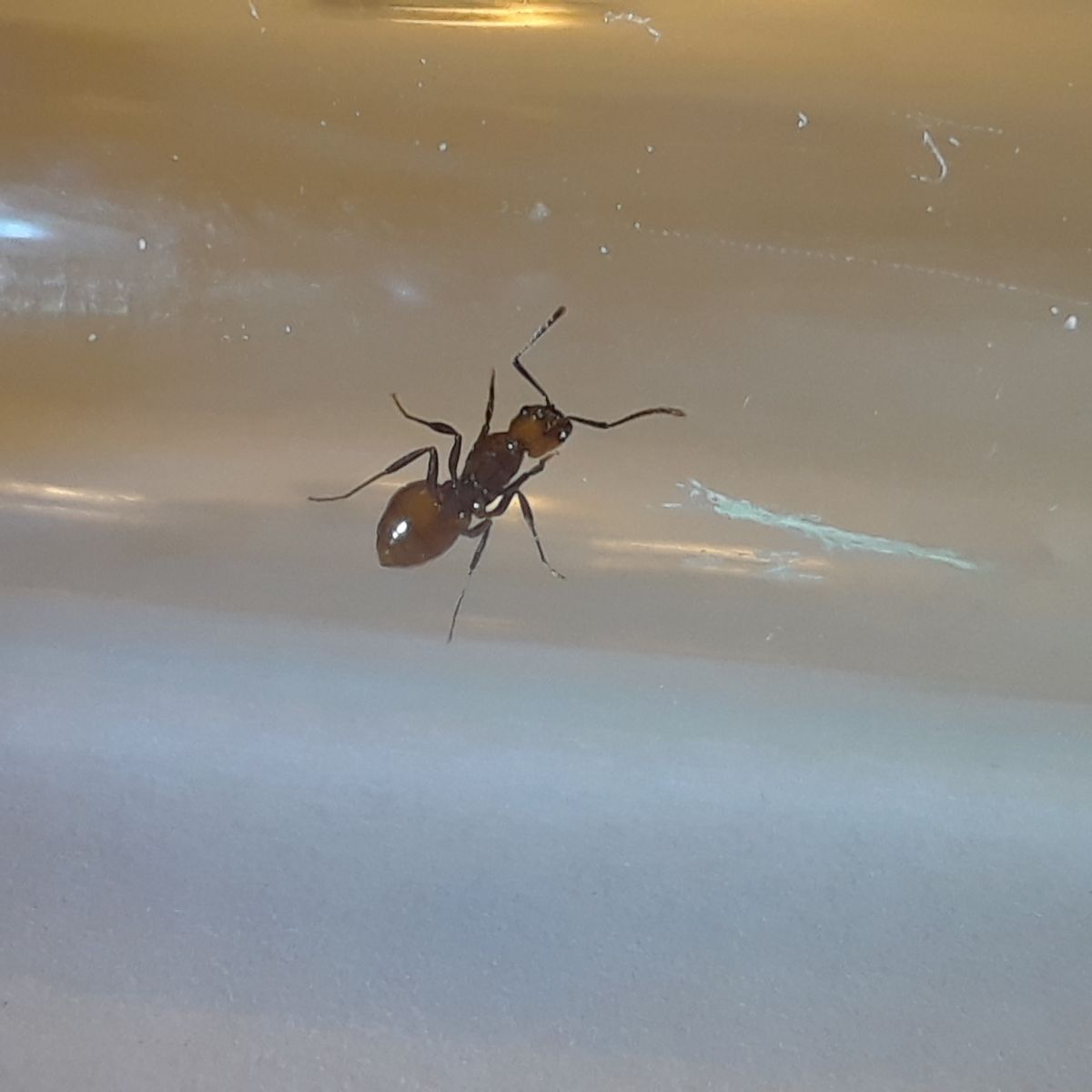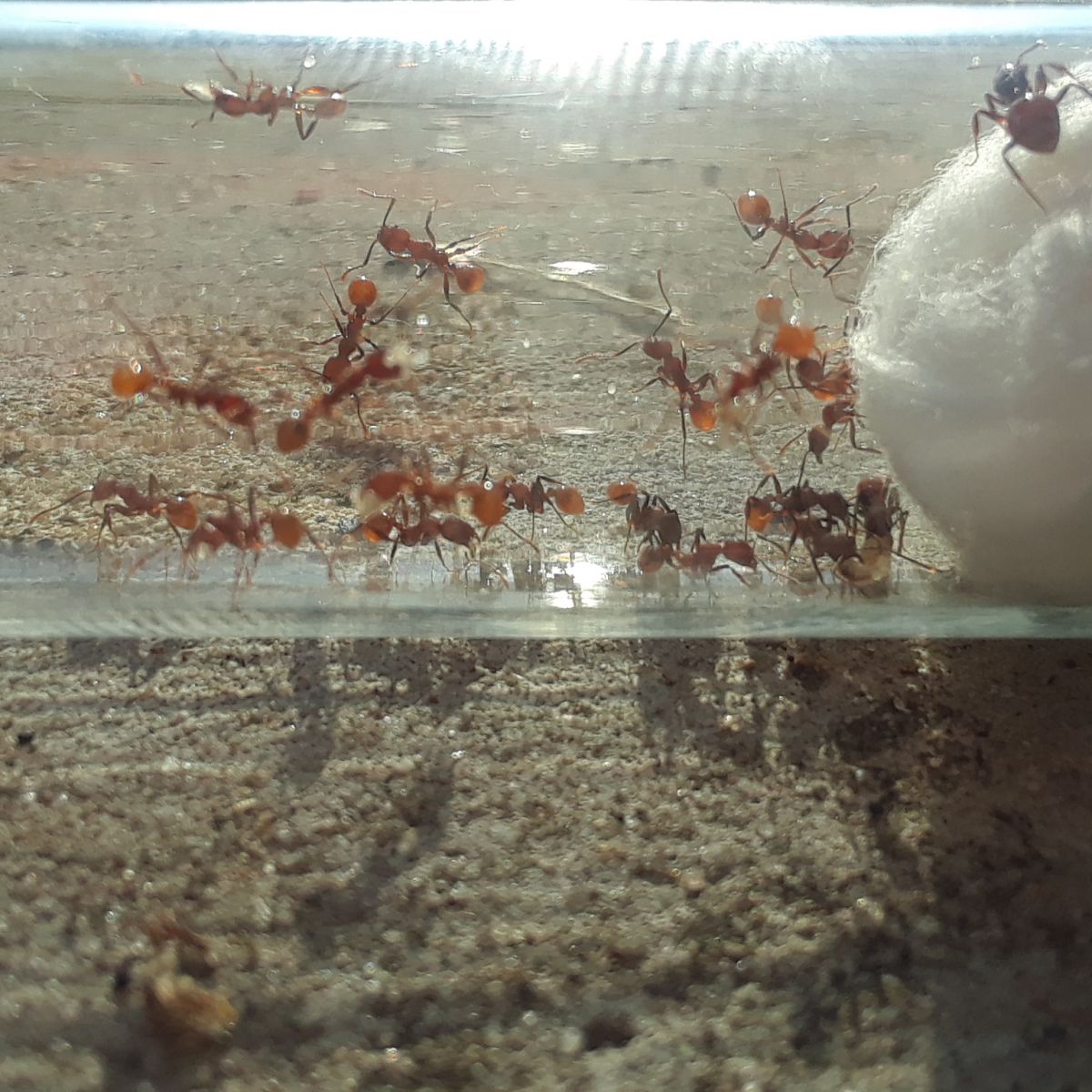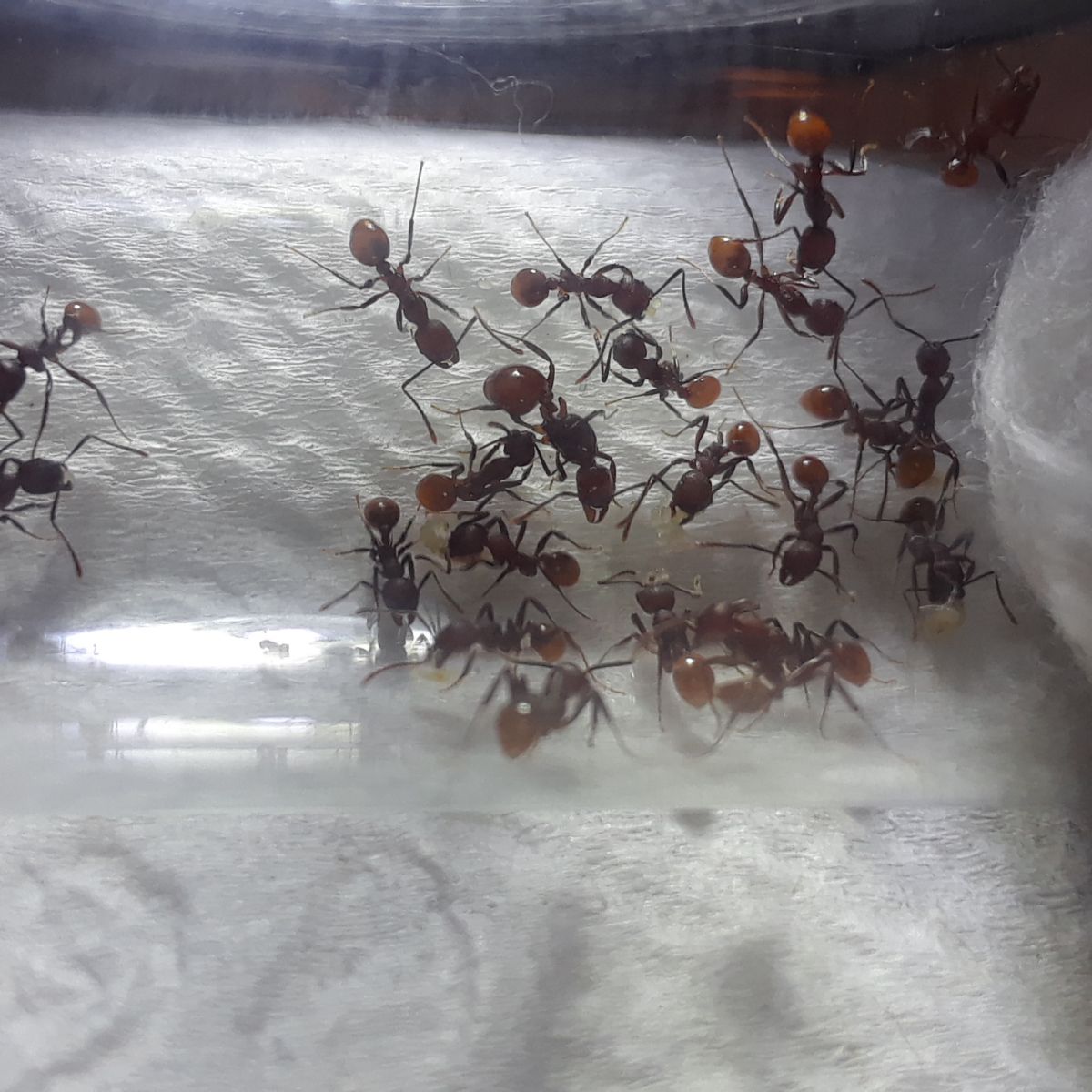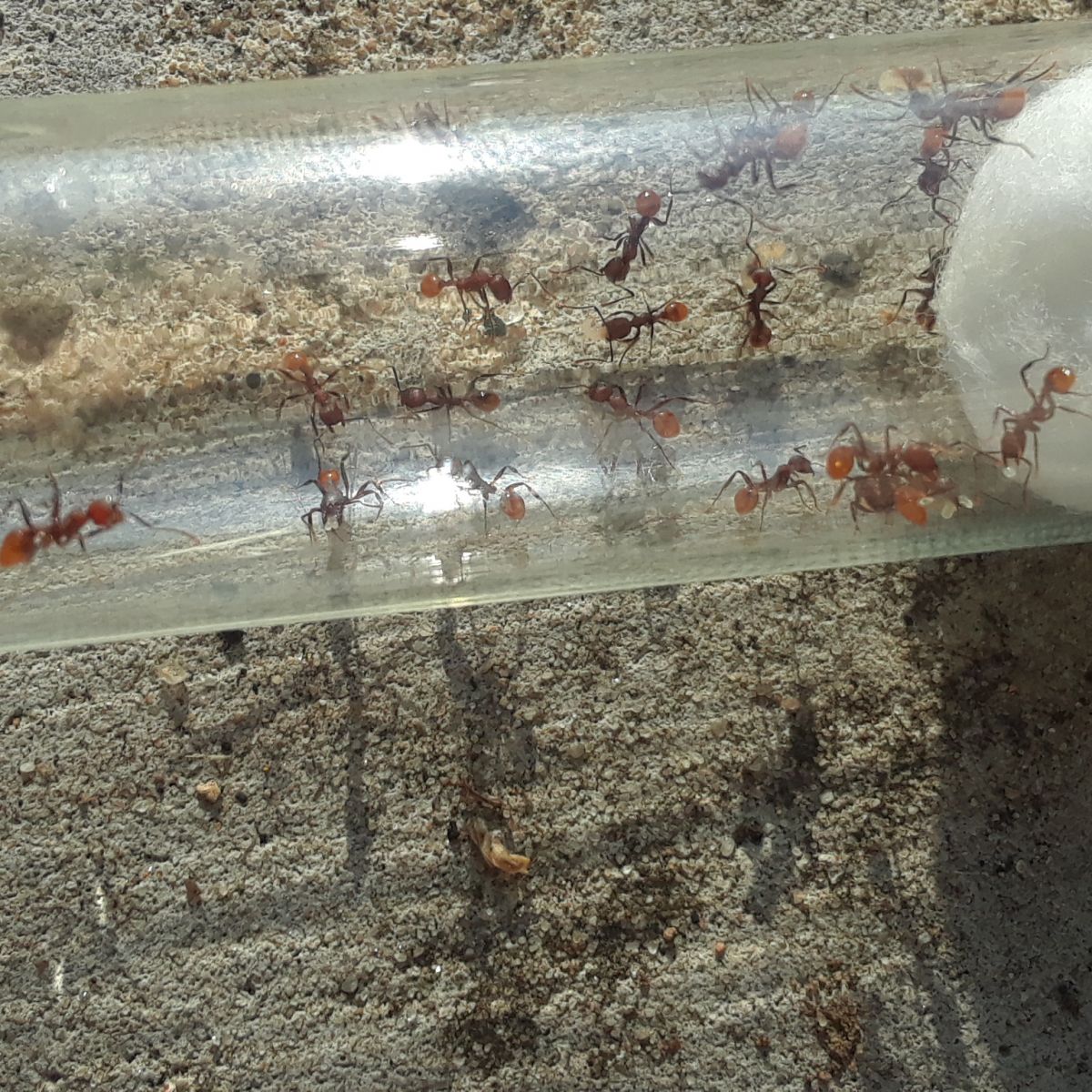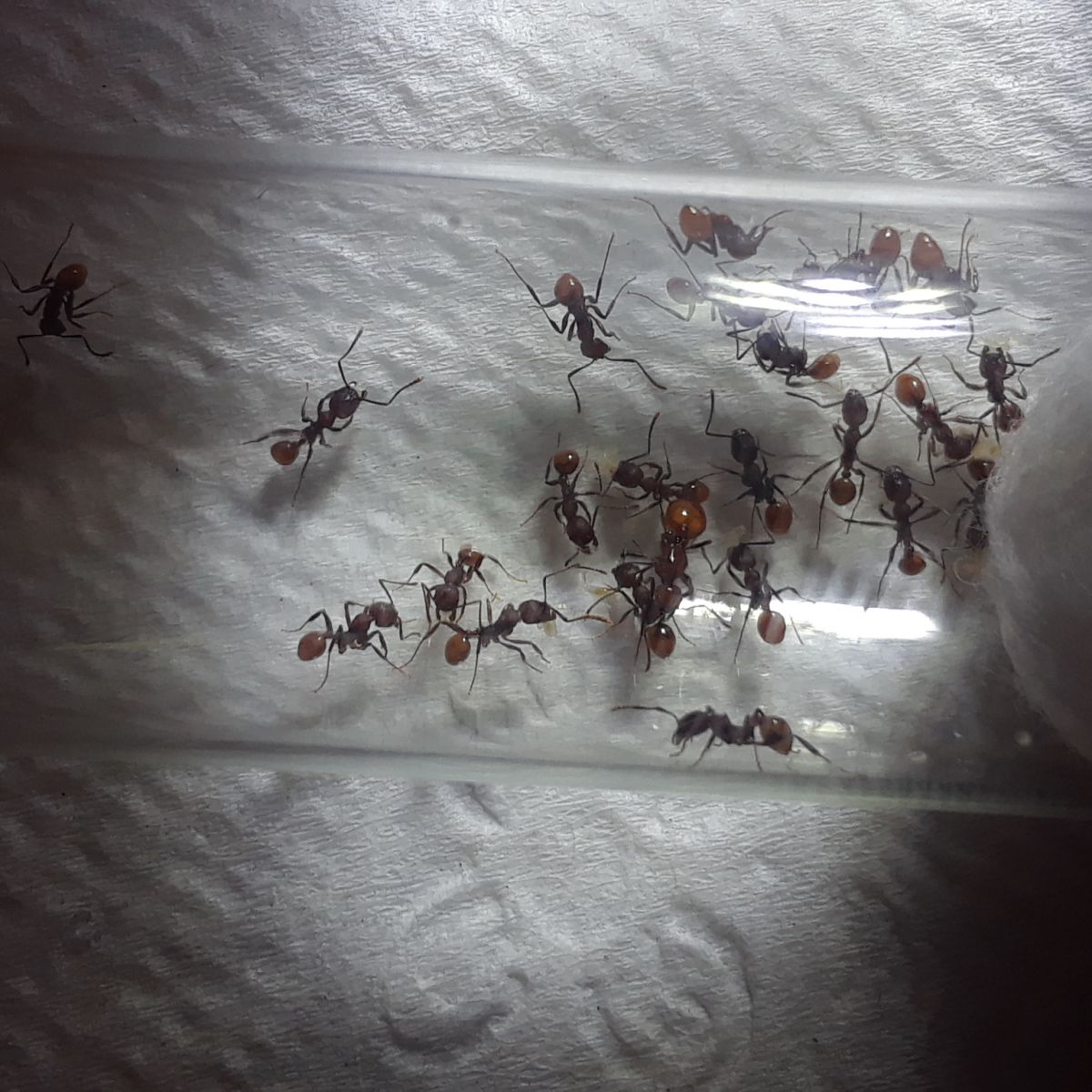Location: Northeastern michigan (lower penninsula) under a large slab of concrete. The concrete itself was in a field/grassy opening in a forest.
Date caught: 5-22-18.
Length: 5mm
Coloration: Yellow, or maybe slightly orangish.
Other information: These girls had a strong (and strange) smell to them when threatened. I can't say what it smelt like, but it wasn't good nor was it necessarily bad. It was strong though.
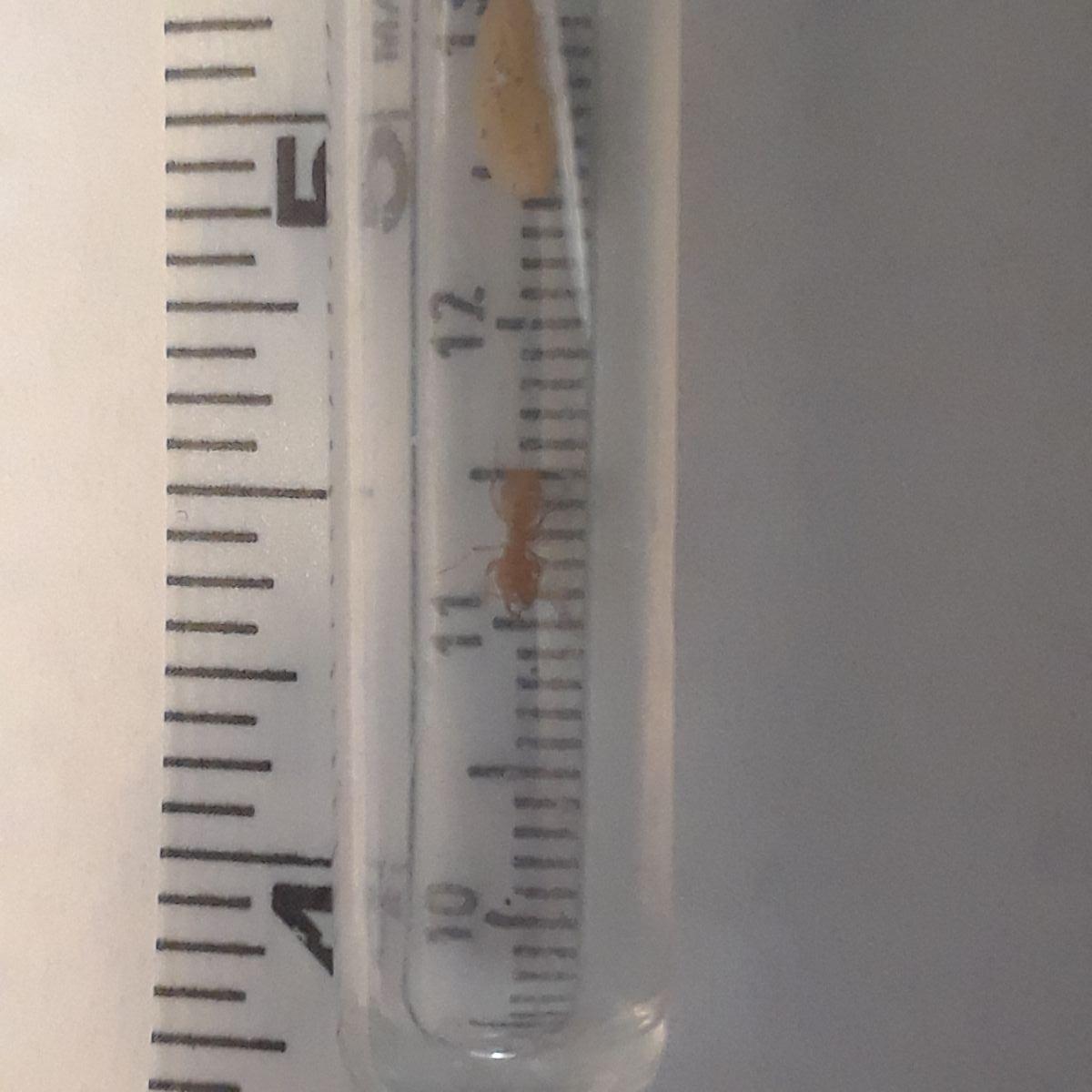
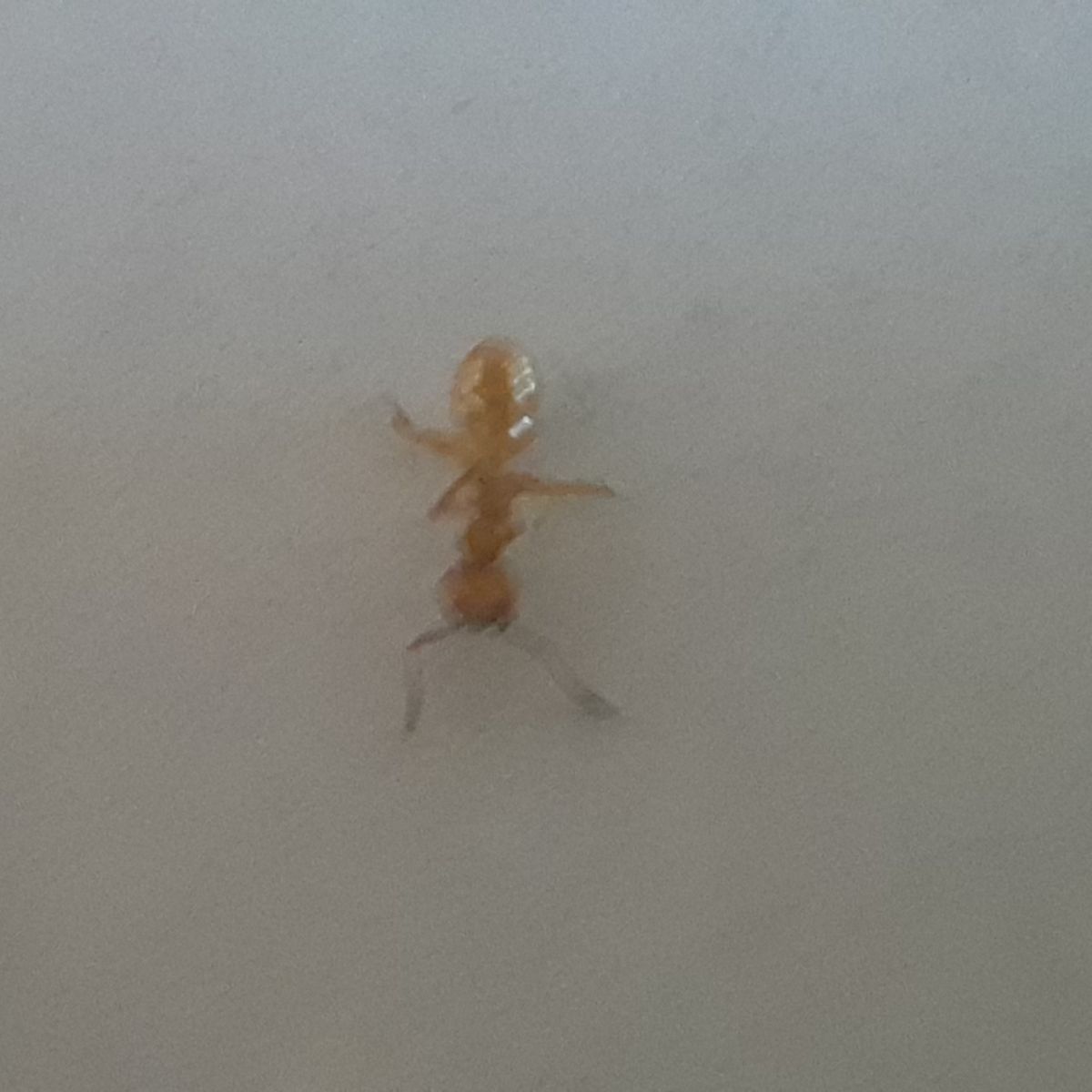
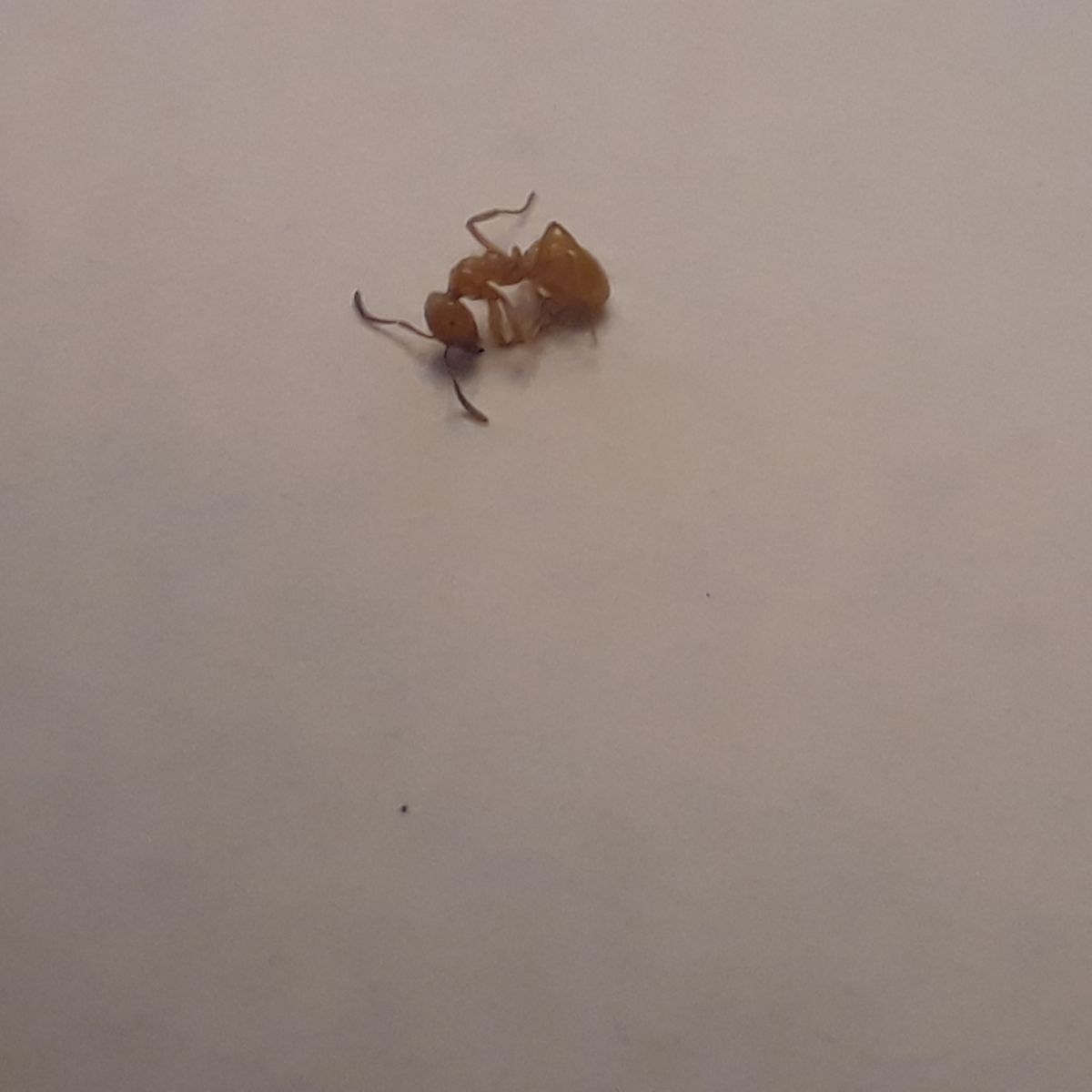
I need a verification I'D on the pics below. I think these are Aphaenogaster tennesseensis. Is the bigger one a queen? They were caught about 5 miles away from the workers above, under/inside rotting particle board. What I think is the queen is 5mm, she could possibly be pushing 6mm.
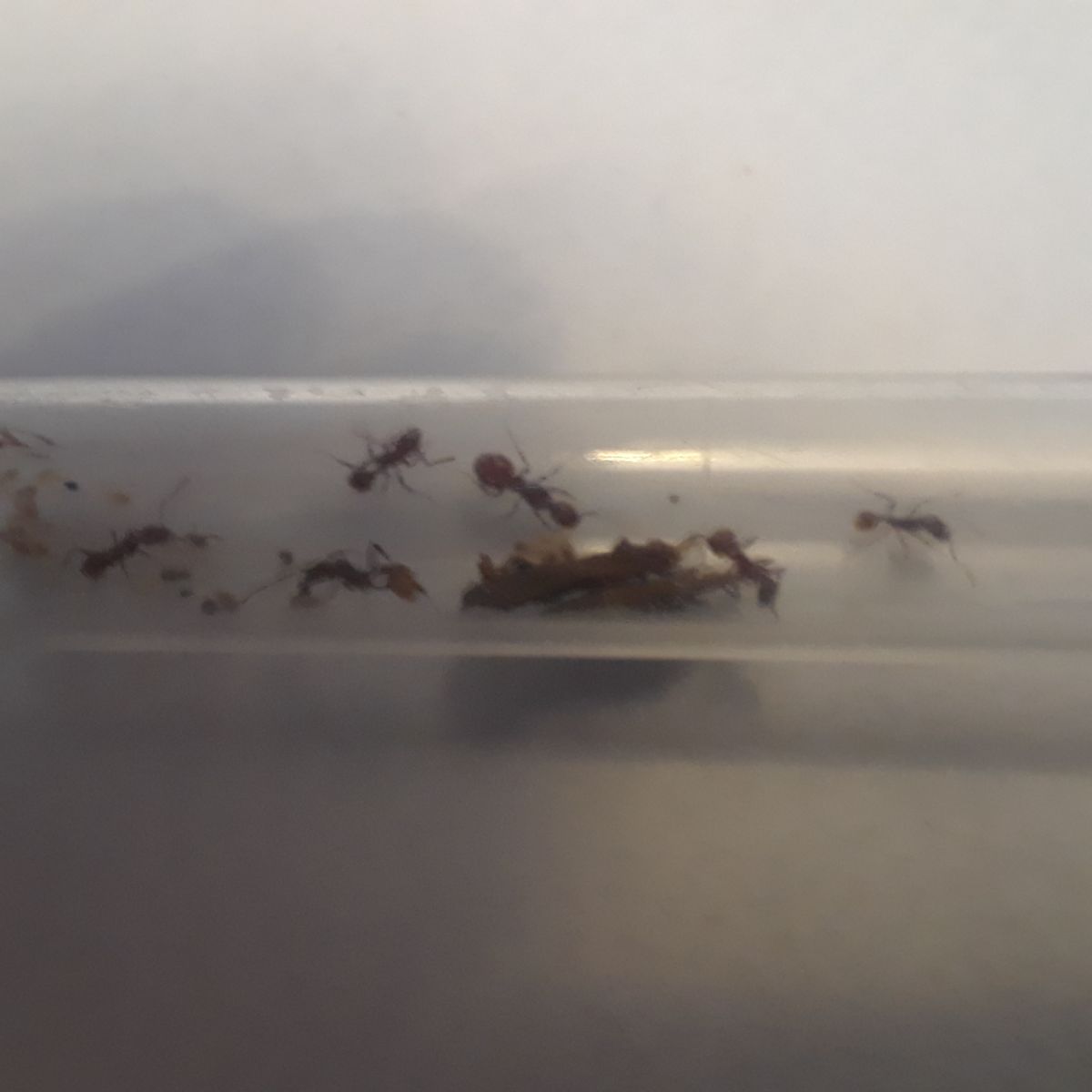
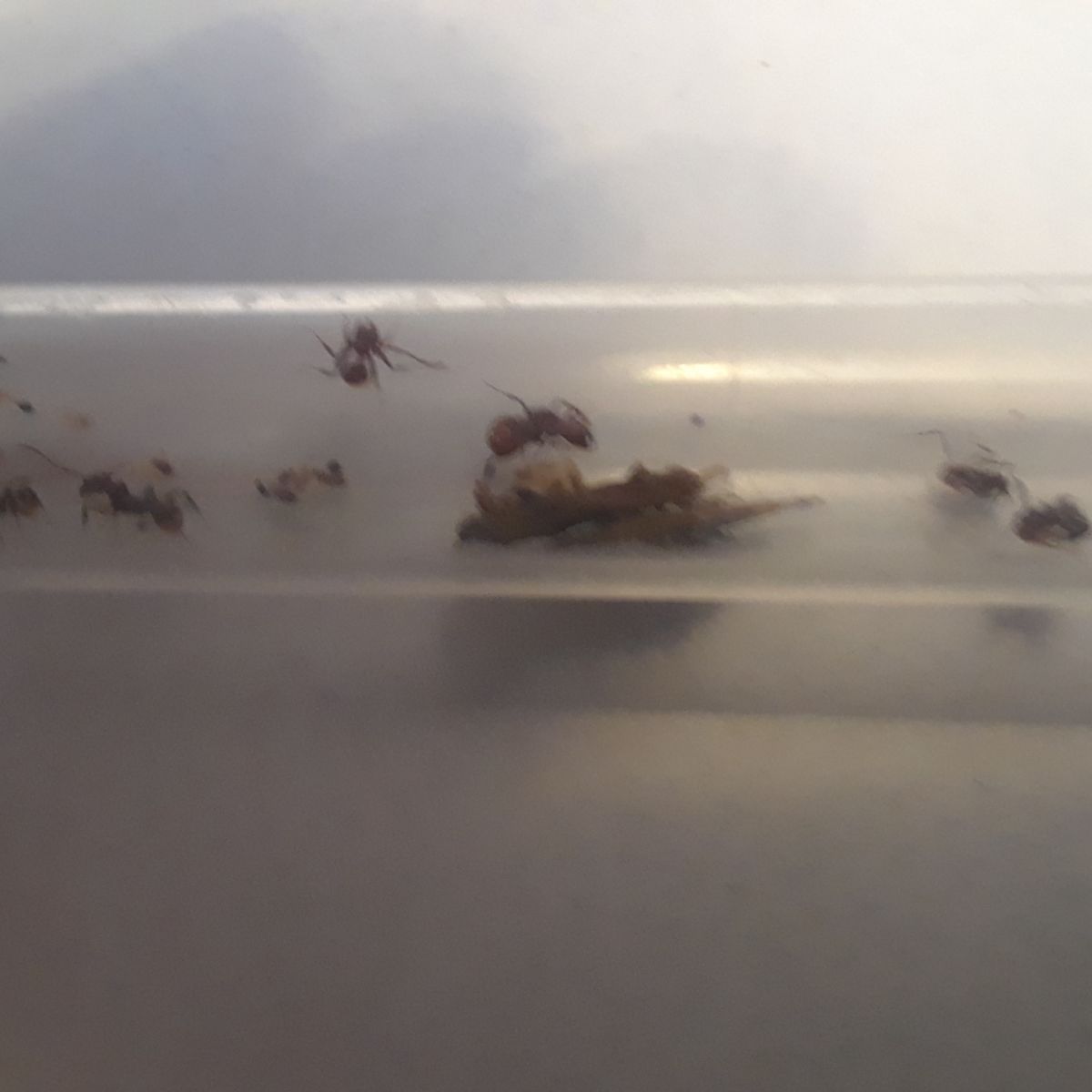
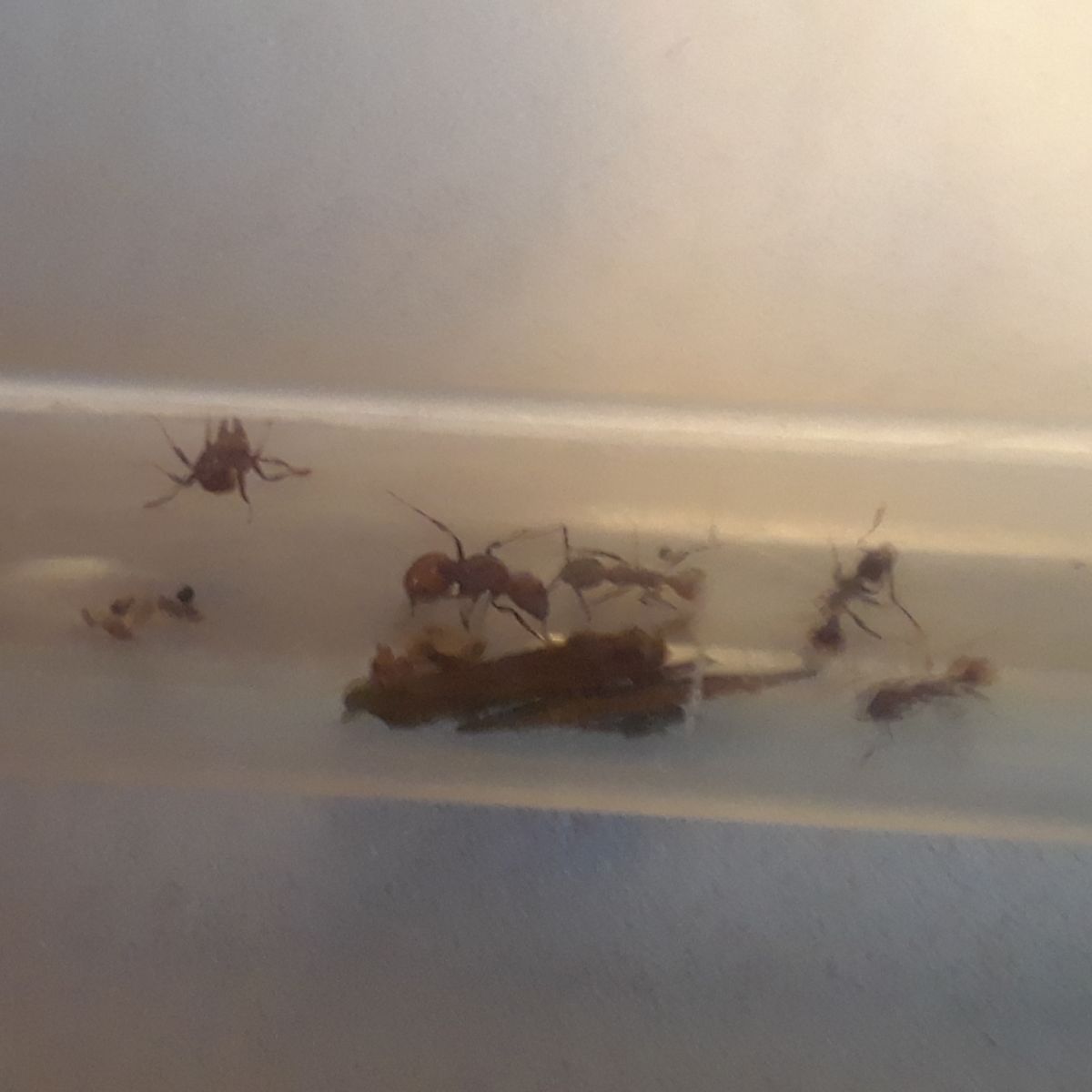
The one I think (and need verified) is in the middle. Better pics of her are in the next post.
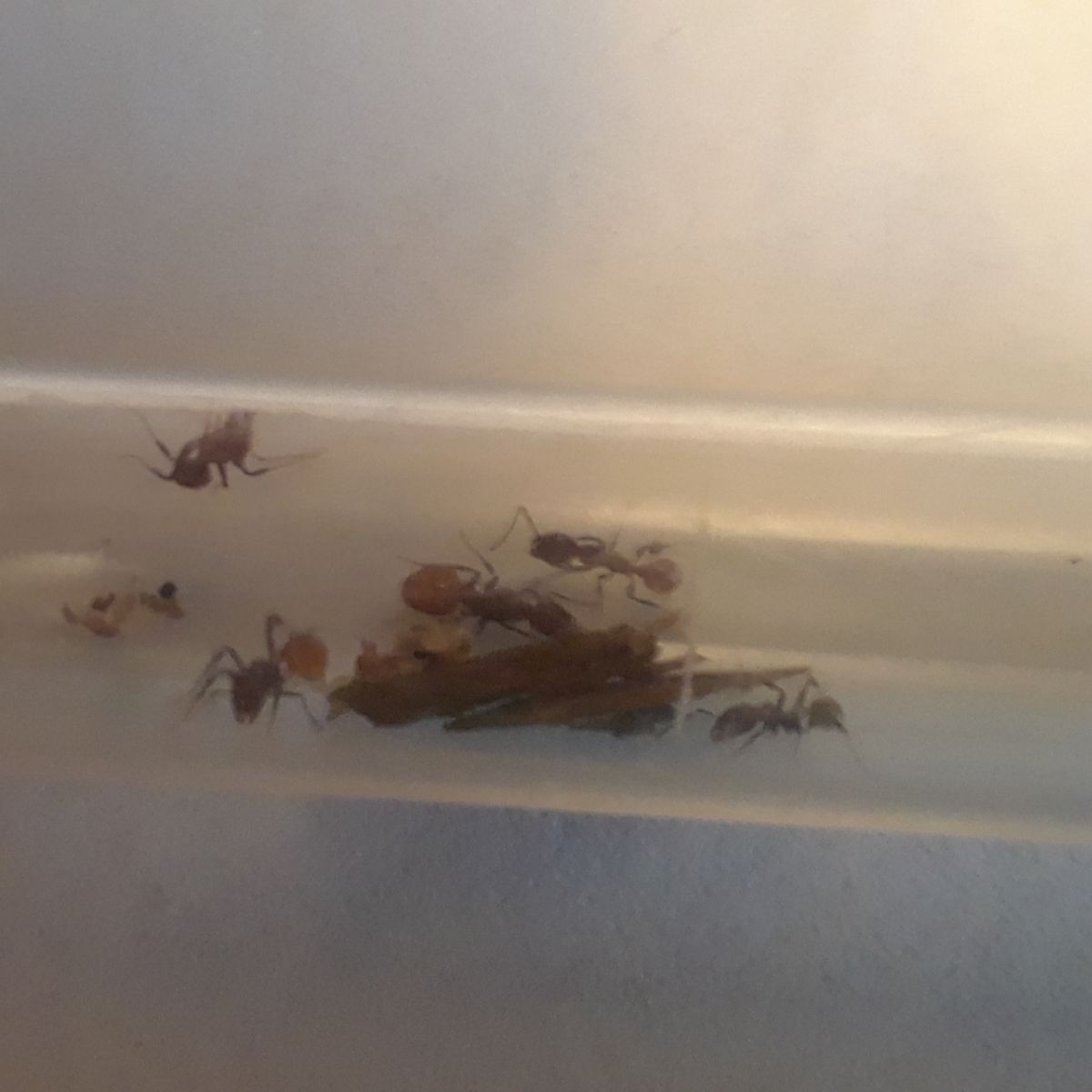
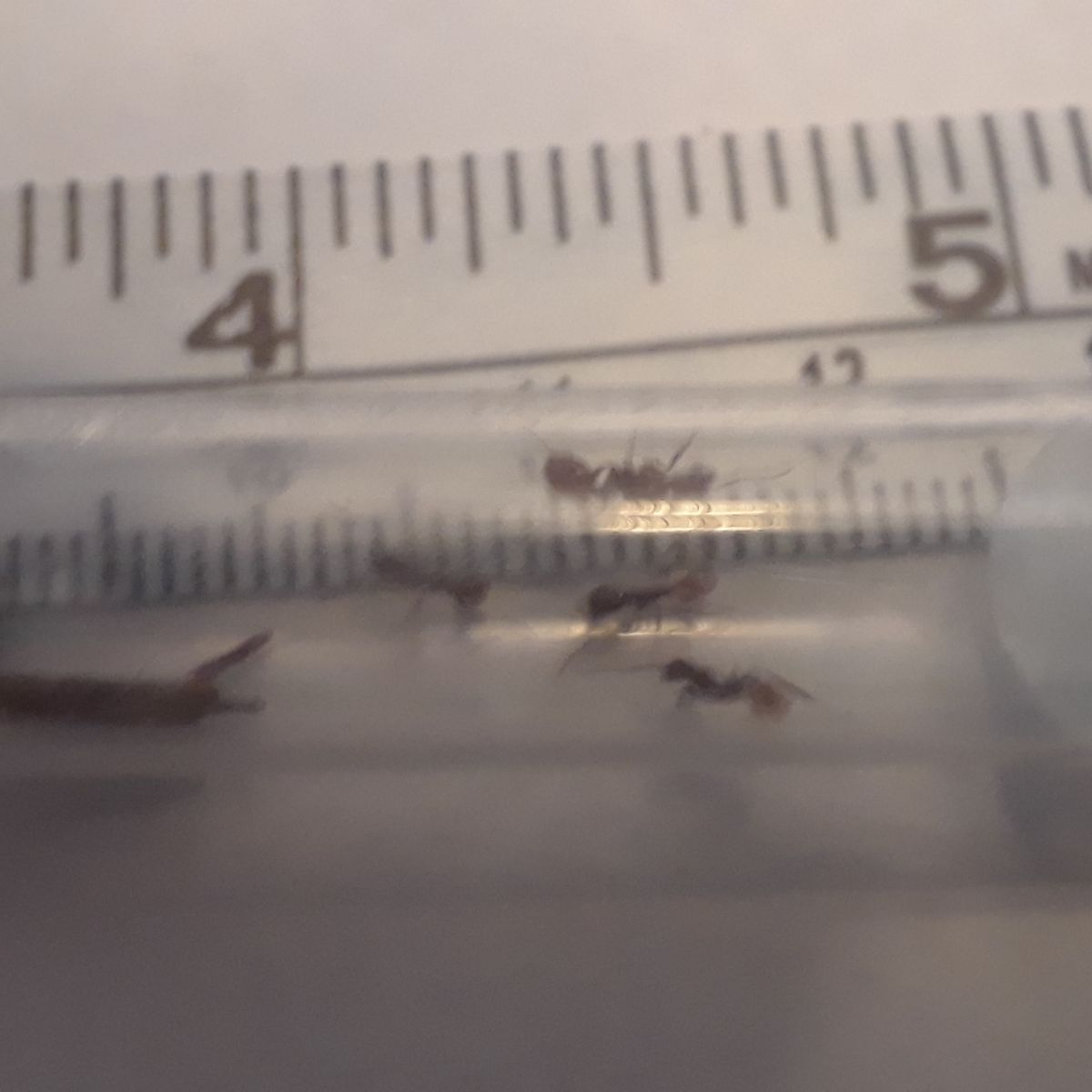
Edit: I'll get some better pics in a bit. I thought these were better than what they are.
Edited by Jamiesname, May 22 2018 - 6:37 PM.







